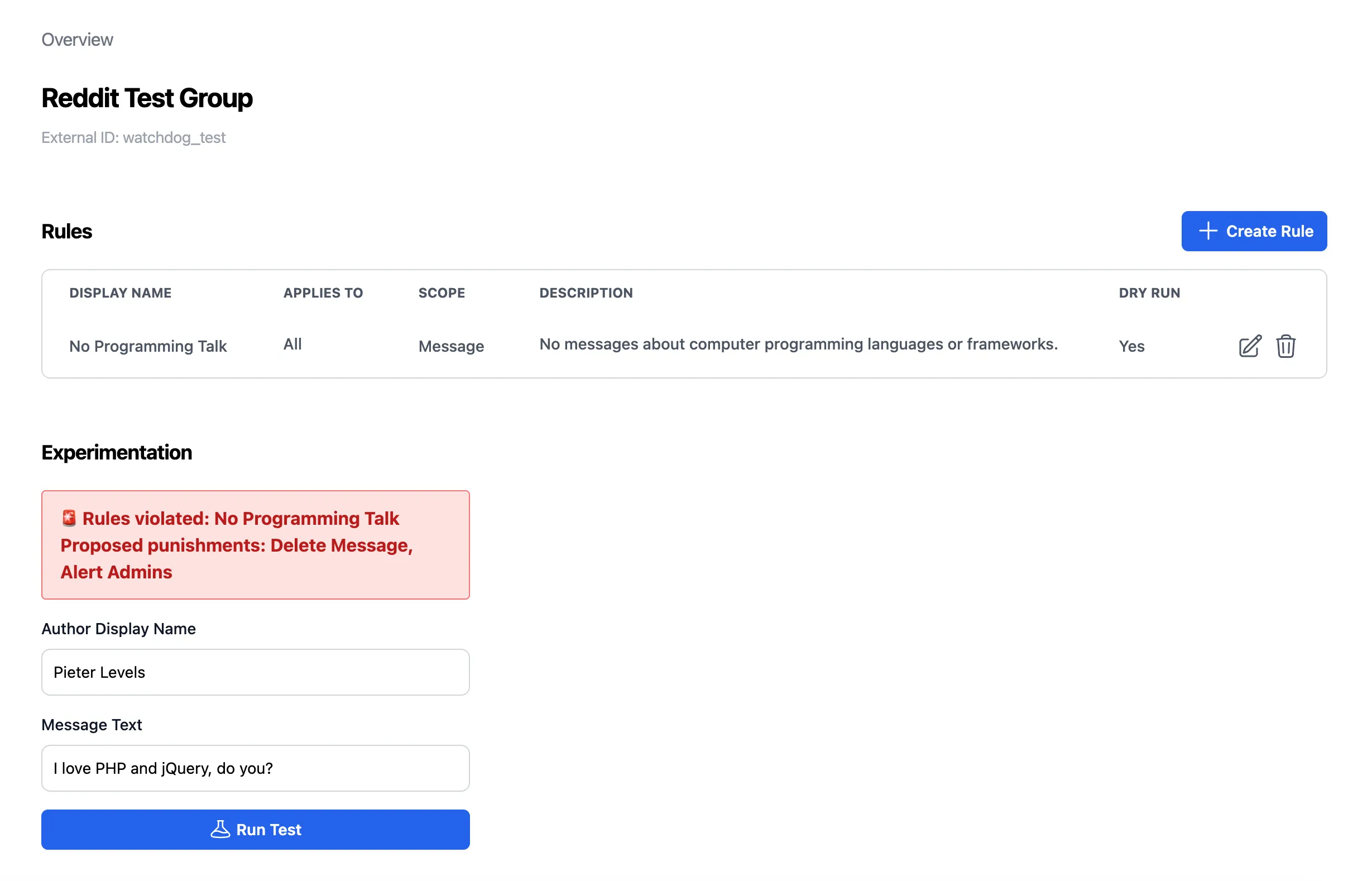USPS Scam Text Messages: How to Stop Package Delivery Scams
In recent years, scammers have increasingly targeted consumers with fraudulent text messages pretending to be from the United States Postal Service (USPS). These scam texts often claim that a package is waiting at a warehouse, but you need to provide additional details or pay a small fee to receive it. If you’ve received a suspicious USPS text, you’re not alone.
In this article, we’ll break down how these USPS scam texts work, provide real examples, and explain how Watchdog, an AI-powered content moderation bot, can help detect and prevent these scams automatically.

What Is a USPS Scam Text?
A USPS scam text is a type of phishing attack where scammers impersonate USPS to trick recipients into clicking malicious links or providing sensitive information. These messages often include fake tracking details, urgent warnings, or requests for payment.
Common Features of USPS Scam Texts
- Fake package notifications: Claims that your package is “waiting for delivery” or “stuck in a warehouse.”
- Urgency tactics: Messages that say you need to act immediately to avoid losing your package.
- Suspicious links: Shortened or unfamiliar URLs directing you to phishing sites.
- Requests for personal information: Scammers may ask for your address, phone number, or even credit card details.
Real Examples of USPS Scam Texts
Here are some examples of fraudulent messages that people have received:
- “USPS: Your package has arrived at the warehouse but is on hold due to incomplete address details. Update now: [malicious link]”
- “USPS: Your delivery was unsuccessful. Reschedule here before the package is returned: [malicious link]”
- “USPS: Final notice! Your package is being held. Pay the $1.99 service fee now: [malicious link]”
- “Tracking update: Your package is delayed due to incorrect information. Verify now: [malicious link]”
If you receive a text like this, do not click on the link.
How to Identify a USPS Scam Text
1. Check the Sender
Legitimate USPS messages usually come from official shortcodes or recognized email addresses. If the sender is an unknown phone number, it’s likely a scam.
2. Look at the URL
Scammers use fake domains that look similar to USPS but aren’t legitimate. USPS official links end in “.usps.com”—if it’s anything else, it’s a scam.
3. Watch for Spelling and Grammar Mistakes
Poorly written messages with typos or strange wording are strong indicators of fraud.
4. Remember: USPS Doesn’t Ask for Payments via Text
USPS does not request extra fees via text message. If you’re asked to pay to release a package, it’s a scam.
What to Do If You Receive a USPS Scam Text
1. Do Not Click the Link
Clicking on the link can lead to malware infections or phishing attempts where scammers steal your personal information.
2. Report the Scam
Forward the scam text to SPAM (7726) and report it to USPS at [email protected].
3. Block the Sender
Prevent further scam attempts by blocking the number on your phone.
4. Check Your USPS Tracking Directly
If you’re expecting a package, visit the official USPS tracking page at www.usps.com and enter your tracking number manually.
How Watchdog Can Automatically Detect USPS Scam Texts
Scammers constantly evolve their tactics, making it difficult for individuals to filter out fraudulent messages on their own. https://watchdog.chat, an AI-powered moderation tool, can automatically detect and block these scam texts before they reach your inbox or online community.
How Watchdog Works:
- AI-powered scam detection: Watchdog scans messages in online communities for scam patterns, including USPS phishing attempts.
- Real-time analysis: It evaluates messages in real-time, identifying suspicious links and urgent phrasing used by scammers.
- Automated filtering: Messages flagged as scams can be automatically blocked or flagged for review.
- Protection for online communities: If you run a chat group or forum, Watchdog helps prevent users from sharing scam links with others.
By integrating Watchdog, businesses and online communities can significantly reduce scam messages and keep users safe. Learn more about how Watchdog works at Watchdog.
Final Thoughts
USPS scam text messages are becoming more sophisticated, but by knowing what to look for and using tools like Watchdog, you can protect yourself and your community from falling victim. Always verify package updates through the official USPS website, and never click on links from unknown sources.
If you manage an online platform, chat community, or business, consider using Watchdog to automatically detect and block scams before they cause harm. Stay safe, stay informed, and keep an eye out for fraudsters trying to exploit package delivery anxieties.
For more cybersecurity tips and scam detection solutions, visit Watchdog.
